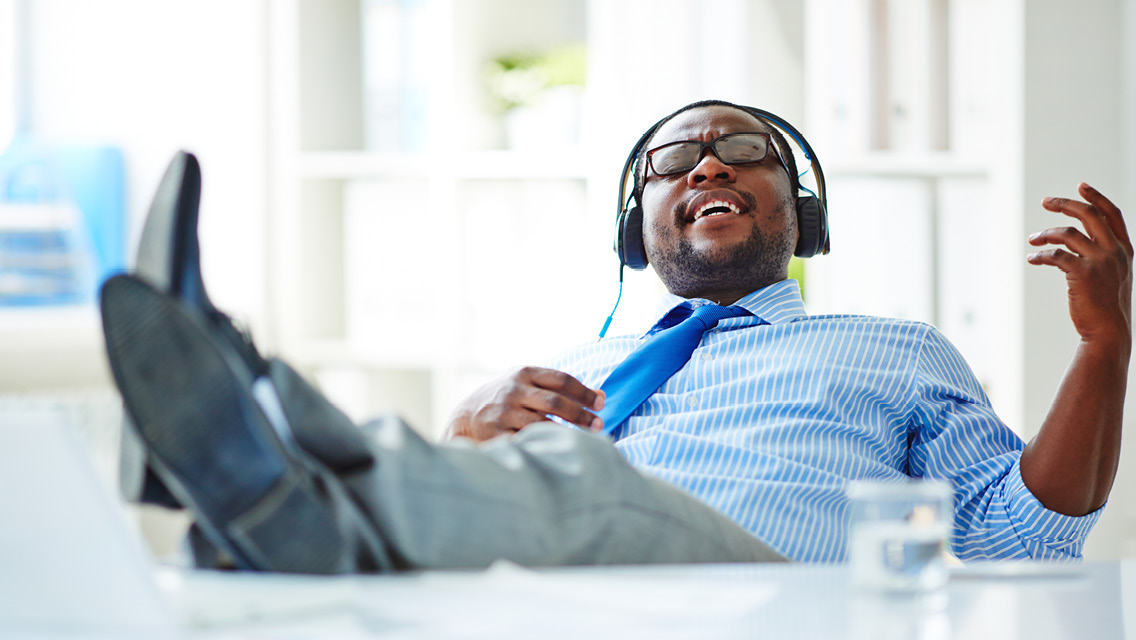In the mid-1980s, physician and author Victoria Sweet, MD, was doing her internal-medicine residency at San Francisco’s Kaiser hospital. She worked 110 hours a week, getting time off only every fourth night, after a 34-hour shift. It was then that Sweet discovered the necessity of a little idleness.
A committed nonsmoker, she started taking “cigarette breaks.” Instead of lighting up, she’d go out, sit with the sun on her face, and breathe.
Sweet went on to incorporate such timeouts into her medical practice. After a patient’s exam, she would retreat to her office for a few minutes and do nothing, allowing the patient’s words and her own thoughts to float in her mind. She’d jot down notes, then go back to the exam room with fresh ideas about a diagnosis and treatment.
“You can’t think without space,” says Sweet, now an associate clinical professor of medicine at the University of California–San Francisco and author of God’s Hotel: A Doctor, a Hospital, and a Pilgrimage to the Heart of Medicine.
“If you’re always doing something,” she says, “there’s no way to get anything new into your mind; there’s no way to reach new conclusions.”
Still, taking a few minutes to stare out the window and daydream can seem an impossible indulgence — or a total waste of time. Our society prizes busyness. We’re encouraged to be “on” as often as we can.
Indeed, a 2014 study by University of Virginia and Harvard psychologists found that 83 percent of participants said they spent zero time “relaxing or thinking,” although 95 percent had pursued some kind of leisure activity.
Idleness stimulates the parasympathetic nervous system, bringing a host of healthful outcomes.
All that busyness can exhaust the nervous system. And neuroscientists are discovering it can kill our ability to be productive and creative, hobbling us at work and in our personal lives.
We’re learning that empty time isn’t so wasteful after all, even if it’s just a few moments here and there.
Here’s more on how and why to carve out some do-nothing space for yourself.
Your Body on Idle
Unstructured time stimulates what neuroscientists call the “default-mode network” in the brain, where creativity and problem-solving happen.
When we’re performing any task, even if it’s sitting in front of a computer, we’re using our executive-control network, which is related to deductive reasoning. It’s when we’re kicking back, letting our minds rest and meander, that the brain’s default-mode network (and its inductive reasoning) kicks in.
“Doing nothing lets you ponder and run simulations to come up with the best idea to push forward in the real world,” says Rex Jung, PhD, a clinical neuropsychologist and assistant professor of neurosurgery at the University of New Mexico.
Neuroscientists call this process “incubation.” It’s when we stumble upon innovations — in cooking, art, engineering, even relationships.
“It’s important time,” Jung says, noting that research now suggests a certain amount of inactivity is essential to creativity.
His conclusion is backed by research from The Energy Project, a consulting firm specializing in worker engagement and productivity. Employees who take time out during the day report a nearly 50 percent greater capacity to think creatively. These same workers see a 46 percent higher level of health and well-being.
Energy Project researchers found that overwork has the opposite effect. “The more hours people work beyond 40 — and the more continuously they work — the worse they feel, and the less engaged they become,” says Andrew Deutscher, vice president of business development at The Energy Project.
Idleness also stimulates the parasympathetic nervous system, which brings a host of healthful outcomes, including a reduced heart rate, good digestion, and better moods.
On an emotional level, empty time is good medicine, too.
If you’re always doing something, says Deutscher, it’s easy to ignore important areas of your life that may be asking for attention — such as troubled relationships or unclear goals and priorities.
“Doing nothing gives your brain a chance to work out things that are not urgent,” says Deutscher. “Otherwise, we’re just skimming the surface of our lives.”
Addicted to Activity
In our always-busy culture, doing nothing carries a stigma — one that some people will do anything to avoid.
Case in point: The previously mentioned University of Virginia–Harvard study had participants sit in an empty room. They were told to remain idle for 15 minutes and were given the option of jolting themselves with an electric shock during that time; nearly 43 percent of participants chose the shock over simply sitting with their thoughts.
“Most people seem to prefer to be doing something rather than nothing, even if that something is negative,” the study authors concluded.
Most people seem to prefer to be doing something rather than nothing, even if that something is negative.
Frank Lipman, MD, who practices integrative and functional medicine, offers two explanations for this. “In some cases, people just don’t feel comfortable stopping and feeling their feelings,” he says. “In other cases, they feel uncomfortable because they perceive it as being lazy.”
Bosses often see it that way, too. Still, according to Energy Project research, businesses benefit from letting workers chill out. The firm commonly recommends allowing employees regular breaks, including naps, on the clock.
“When we take this into companies, we often see people smirk or laugh,” says Deutscher. “Our response is, ‘You may be laughing — but you’re tired!’”
Not Wasting Any Time
There is a difference between truly quieting the mind and enjoying leisure time, Deutscher notes. If you take a weekend day trip with friends or watch an hour of TV (leisure time), your brain is still busy. It’s a totally different effect than sitting quietly and allowing your mind to wander.
The key is being aware of your intention going into the empty time, Deutscher says: When you are conscious about your choice to let your mind and body rest, you are far more likely to reap the benefits.
When you take real downtime, he explains, you replenish your glucose and oxygen levels. You give your brain a chance to do some filing. You’re likely to feel more rested, clear headed, and self-confident as a result.
This may explain why, when you are stuck on a problem or task, you’re often far more able to come up with a solution or “big aha” after a break.
Ready to create more down-time in your days? Here are some simple strategies:
- Weed out time stealers, like incessantly checking email and social feeds or playing games on your phone. Next time you’re waiting in line, use those minutes to let your mind drift.
- While on a walk or performing repetitive chores, like washing dishes, allow your mind to wander. Too much stimuli will counteract the positive effects of daydreaming, so skip listening to music or talk radio. Let your mind have that space instead.
- If you’re at work, take five or 10 minutes a day — a few times a day, if possible — to stare out the window.
- At the end of the day, turn off your electronic devices and sit. Let your body relax and allow your thoughts and feelings to unfold.
- Funny as it may sound, idleness is a skill to be learned. Doing nothing takes practice. But once you start experiencing the rewards, the more “nothing” you’ll be comfortable doing. And there’s nothing wrong with that.
How the Experts Chill Out
Experts have a range of ideas about what idleness looks like. It could be sitting on the couch and staring into space, doing no physical or directed mental activity. This means your brain gets a complete break from the tactical deductive reasoning required for executing tasks.
But Timothy Wilson, PhD, a psychology professor and lead author of a 2014 University of Virginia and Harvard study that tested participants’ willingness to tolerate empty time, believes that idleness can also involve minor stimuli to “lock onto.” He recommends going for a walk. Based on what he’s seen in his research, Wilson thinks this can make it easier for people to be alone with their thoughts.
When doing research, Rex Jung, PhD, assistant professor of neurosurgery at the University of New Mexico, will push back from his desk after a stint of reading, stare out the window, and let the information wash over him. At other times, Jung says, he likes to perform repetitive activities — his favorite is mowing the lawn — that occupy his brain on a basic level, still allowing him to ruminate and space out.
“Your body can be doing something while your mind can run free,” he says.
Victoria Sweet, MD, associate clinical professor of medicine at the University of California–San Francisco and author of God’s Hotel: A Doctor, a Hospital, and a Pilgrimage to the Heart of Medicine, likes to sits with her cup of coffee in the morning and do nothing else.
“You don’t have to have your coffee and read the paper and talk to someone and text. Just drink your coffee,” she says.




This Post Has 0 Comments